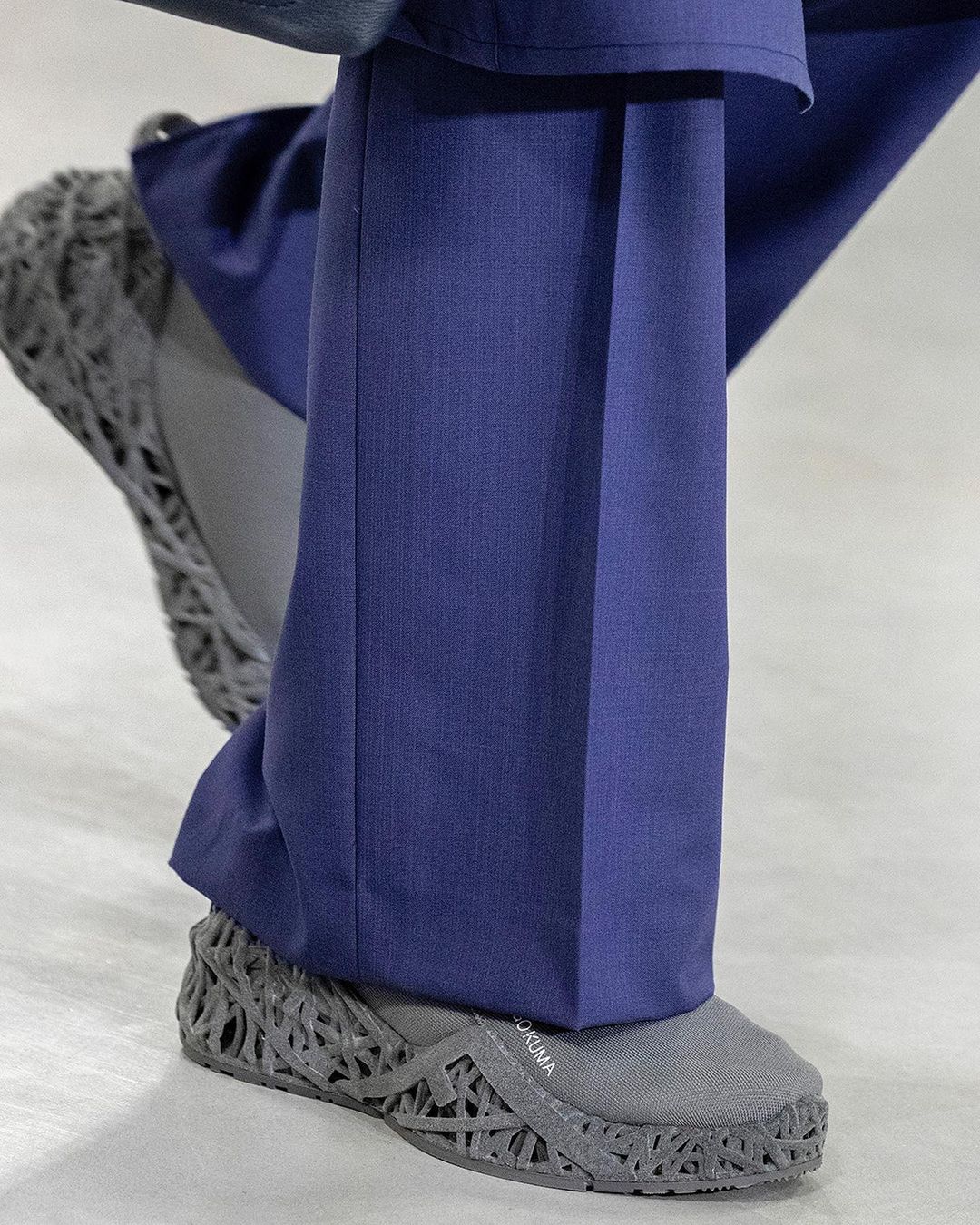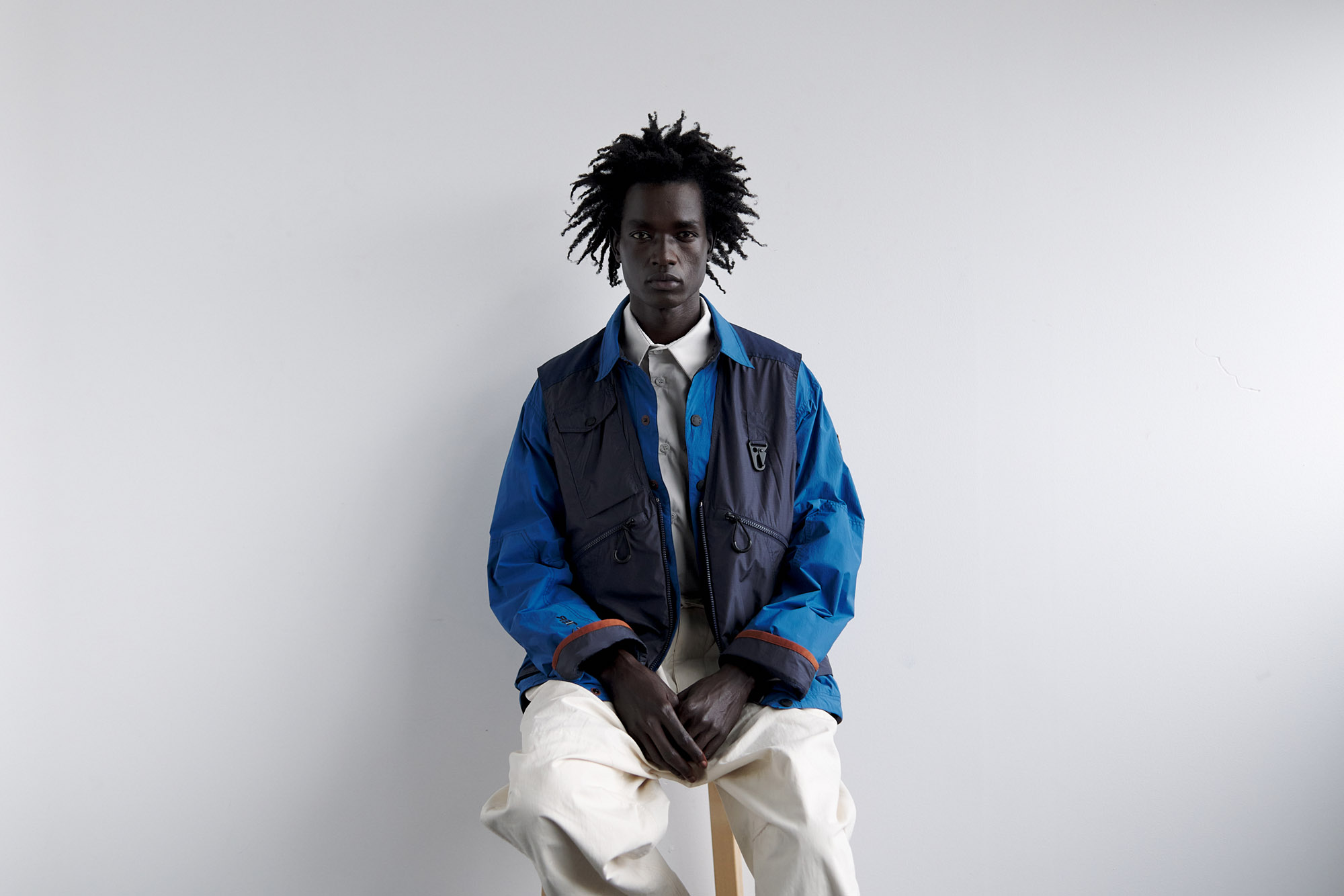
As menswear month comes to a close, it is a chance to zoom into the finer details of the collections: like Fendi’s recent collaboration with pioneering Japanese architect Kengo Kuma, first presented as part of the house’s S/S 2024 men’s collection earlier this month.
The show itself took place as part of Pitti Uomo 104, the latest edition of the Florentine menswear fair, which takes place each January and June. Attendees were transported to the recently inaugurated Fendi Factory, just outside the city in the Tuscan countryside, for a show that was an ode to craft and the atelier that creates the house’s handbags and leather goods in the location (the artisans continued to work, as the show’s backdrop, before joining accessories and menswear creative director Silvia Venturini Fendi for her bow).
Fendi unites with Kengo Kuma on new accessories

Craft was also central to the collaboration with Kuma, who created versions of Fendi’s ‘Peekaboo’ bag, ‘Baguette Soft Trunk’ and ‘Flow’ sneakers. The various pieces reflect Kuma’s deep-rooted relationship with Japanese tradition and use of natural materials, a philosophy that has informed much of his work.
Here, the various accessories were made using materials that include ‘waranshi’, a version of Japanese washi paper made from cotton and tree-bark fibres that is traditionally used for origami and lantern making. Here, it lends the bags a natural, gently speckled effect, evocative of handmade paper. Another fabric is made using the practice of ‘yatara ami’ weaving, using bamboo strands for a woven lattice-like effect. The sneakers include an architectural sole designed for the project by Kuma.

‘I've always thought of Kengo Kuma as a master of naturalist architecture. He was one of the first to understand the importance of building nature into architecture both inside and out,’ explains Silvia Venturini Fendi of uniting with Kuma on the project, which is titled ’Fendi Kengo Kuma’. Fendi calls it a ‘new artistic dialogue between Italy and Japan’, suggesting a possible further chapter.
‘I feel a sense of kinship with his Japanese approach to savoir-faire – I think it is a strong value shared between Japan and Italy,’ she continues.
‘Nature and craft have always been at the centre of my work as an architect and a designer,’ adds Kuma. ‘When Fendi asked me to reflect on their bags and shoes, I thought of them like small architectural projects on a human scale.’
Receive our daily digest of inspiration, escapism and design stories from around the world direct to your inbox.

Jack Moss is the Fashion & Beauty Features Director at Wallpaper*, having joined the team in 2022 as Fashion Features Editor. Previously the digital features editor at AnOther and digital editor at 10 Magazine, he has also contributed to numerous international publications and featured in ‘Dazed: 32 Years Confused: The Covers’, published by Rizzoli. He is particularly interested in the moments when fashion intersects with other creative disciplines – notably art and design – as well as championing a new generation of international talent and reporting from international fashion weeks. Across his career, he has interviewed the fashion industry’s leading figures, including Rick Owens, Pieter Mulier, Jonathan Anderson, Grace Wales Bonner, Christian Lacroix, Kate Moss and Manolo Blahnik.
-
 This designer’s Shoreditch apartment is ‘part grotto, part cabinet of curiosities’
This designer’s Shoreditch apartment is ‘part grotto, part cabinet of curiosities’The apartment serves as Hubert Zandberg’s ‘home away from home’, as well as a creative laboratory for his design practice. The result is a layered, eclectic interior infused with his personality
-
 Curvilinear futurism meets subtropical beaches at Not A Hotel’s ZHA-designed Okinawa retreat
Curvilinear futurism meets subtropical beaches at Not A Hotel’s ZHA-designed Okinawa retreatZaha Hadid Architects has revealed the design for the first property in Not A Hotel’s futuristic new Vertex collection, coming soon to southern Japan
-
 Gorden Wagener leaves the helm of Mercedes-Benz design after 28 years with the company
Gorden Wagener leaves the helm of Mercedes-Benz design after 28 years with the companyThe German designer is stepping down from the role of chief design officer at Mercedes-Benz. We look back at his influence and impact on the world of automotive and luxury design
-
 Unboxing beauty products from 2024, as seen on the pages of Wallpaper*
Unboxing beauty products from 2024, as seen on the pages of Wallpaper*Wallpaper's 2024 beauty picks included Chanel lipstick, Bottega Veneta perfume and solid soap from the likes of Aesop, Celine, Diptyque, Hermès and Sisley
-
 Kim Jones to exit Fendi after four years
Kim Jones to exit Fendi after four yearsFendi has announced that Kim Jones is leaving his role as artistic director of womenswear and couture at the Italian house, though will remain at Dior Men
-
 The breathtaking runway sets of S/S 2025, from beanbag animals to a twisted living room
The breathtaking runway sets of S/S 2025, from beanbag animals to a twisted living roomWallpaper* picks the best runway sets and show spaces of fashion month, which featured Bottega Veneta’s beanbag menagerie, opulence at Saint Laurent, and artist collaborations at Acne Studios and Burberry
-
 Fendi’s sci-fi collaboration with MAD Architects looks to have descended from a distant realm
Fendi’s sci-fi collaboration with MAD Architects looks to have descended from a distant realmA version of Fendi’s ‘Peekaboo’ handbag and an ergonomic sneaker are shaped by MAD Architects’ Ma Yansong’s ‘strange, unfamiliar’ eye in the Italian house’s latest collaborative project
-
 The A/W 2024 menswear collections were defined by a ‘new flamboyance’
The A/W 2024 menswear collections were defined by a ‘new flamboyance’Sleek and streamlined ensembles imbued with a sense of performance take centre stage in ‘Quiet on Set’, a portfolio of the A/W 2024 menswear collections photographed by Matthieu Delbreuve
-
 In fashion: the defining looks and trends of the A/W 2024 collections
In fashion: the defining looks and trends of the A/W 2024 collectionsWe highlight the standout moments of the A/W 2024 season, from scrunched-up gloves and seductive leather ties to cocooning balaclavas and decadent feathers
-
 Women’s Fashion Week S/S 2025: what to expect
Women’s Fashion Week S/S 2025: what to expectNext week sees the arrival of Women’s Fashion Week S/S 2025, with stops in New York, London, Milan and Paris. Here, our comprehensive guide to the month, from Alaïa’s arrival in New York to Alessandro Michele’s Valentino debut
-
 Utilitarian men’s fashion that will elevate your everyday
Utilitarian men’s fashion that will elevate your everydayFrom Prada to Margaret Howell, utilitarian and workwear-inspired men’s fashion gets an upgrade for S/S 2024